Diary of a Failte Ireland Food Champion
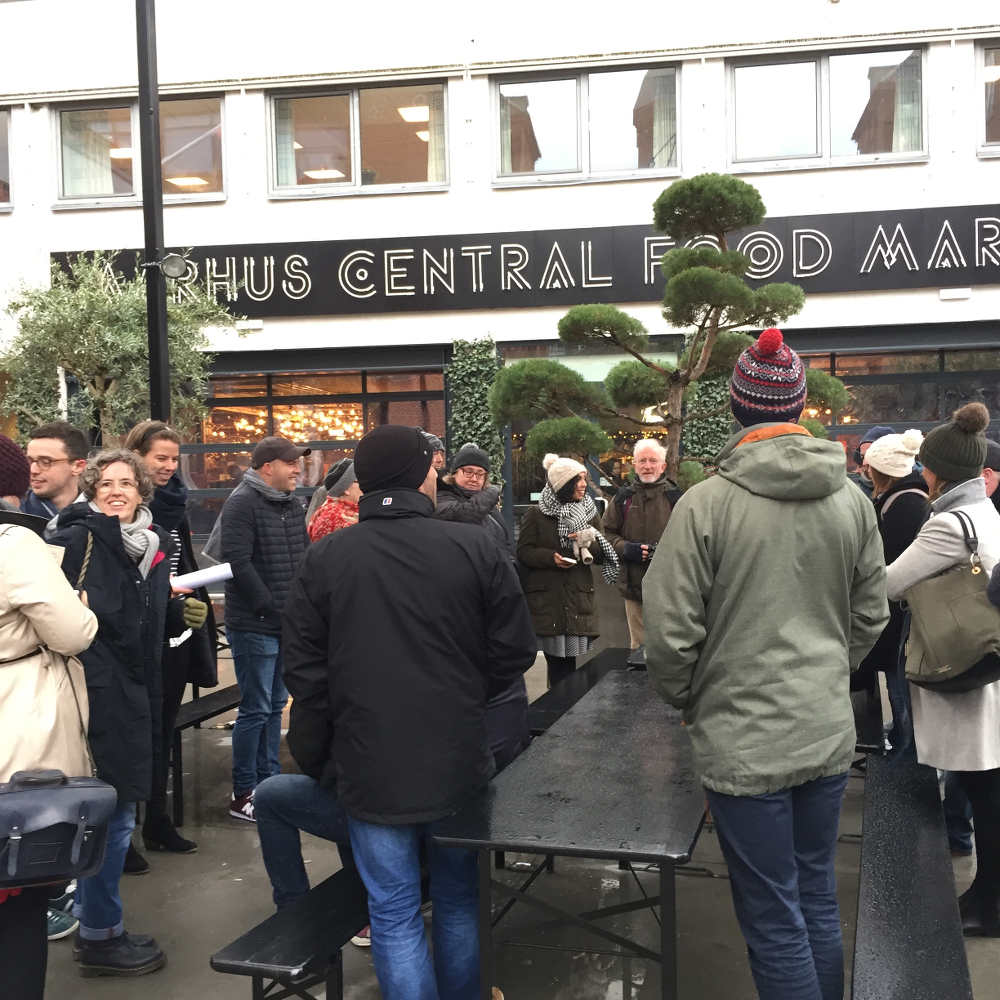
Failte Ireland Food Champion Anthony O'Toole tells us about a memorable benchmarking trip to Denmark, that will help to “put our little green land on the world map for food and tourism”
LET’S LEARN FROM DENMARK
One of the first tasks set out to all Food Champions back in June 2016 was to think of a destination that has a strong and influential food tourism offering. One we would like to explore collectively for an international benchmarking trip. In order to grow and support food tourism experiences at a grassroots level, one must keep a finger on the pulse of what is happening around the world and visit examples of ‘best practice’ in food tourism.
The purpose of the expedition was to share learnings and present ideas that can be implemented in our regions. Our learnings will be used to mobilise local food and tourism businesses, and help grow awareness of the importance of Food Tourism as a driver of economic growth. The outcome of this is to improve tourism spend across the country, not just in towns and cities, but in rural areas too.
So, ideas were shared, emails bounced forwards and backwards, and a decision was made to visit Denmark. Some would ask why Denmark? There were many reasons put forward for visiting this country, and not only the internationally acclaimed Nordic Food Movement. First of all Denmark is comparable in size to Ireland, and in climate, in terms of rain and daylight. But they do have slightly warmer summers and colder winters and a larger population of 5.7 million.
Secondly, along with the New Nordic Cuisine making waves across the globe, the cultural phenomenon of ‘Hygge’ is happening across the world too. Hygge (pronounced hue-gah) is a Danish word that is a feeling that comes through taking genuine pleasure in making ordinary, every day things more meaningful, beautiful or special.
Thirdly, Denmark has plans in motion to become the world's first 100% organic country. And fourthly, in 2017 Aarhus and Central Denmark Region will hold the title of European Capital of Culture jointly with Paphos in Cyprus. It will also gain the title of European Region of Gastronomy the same year jointly with Riga, Latvia and Lombardy, Italy. From a food tourism perspective, this all is a mammoth achievement. All eyes are on Denmark.
Many of my friends and colleagues have travelled to Denmark, particularly Copenhagen, since the movement achieved international gastronomic recognition. This year was my first visit. It’s been on the travel list for a while but it was not a priority. For me, many other countries and cities with a more interesting food culture were above Denmark like regions in Mexico, India, South America, Africa, France, Spain, and Italy.
To be honest, I’ve been a little critical of the Nordic Food Movement. Not sure why, maybe because the movement is still very young and seems a bit polished. Where was the history and authenticity? I grew up reading many cookbooks and watching cookery shows, learning about cultures steeped in culinary history and saying ‘I just need to go there and experience that when I’m older’. Nordic cuisine was not on my radar back then.
When we had to pick a place to explore and learn from a food tourism perspective, Denmark was on the top of the list. I wanted to see how they achieved the international acclaim in such a short timeframe. For the last seven years or so the New Nordic Cuisine appears on my timeline literally everyday - on platforms like Twitter, Facebook and Instagram, on television programmes, in newspaper and journal articles, in cookbooks and blog posts. Even on my dinner plate in cafés and restaurants around Ireland.
So, how did this all happen?
First, for the people who are not familiar with the Nordic Food Movement, here is a little summary. In November 2004, Claus Meyer and Rene Redzepi, the chefs behind Noma in Copenhagen, now one of The Worlds 50 Best Restaurants (currently ranked fifth in the world in 2016), invited visionary Nordic chefs, food writers and food professionals within the Nordic region to a symposium on New Nordic Cuisine.
This event witnessed the birth of a manifesto for the New Nordic Kitchen. In this 10-point manifesto, these movers and shakers made it clear that Nordic cuisine can be compared with the best cuisines around the globe by virtue of its taste and identity, but also in its pursuit for the quality, simplicity and purity that can be found in their regional cuisines. Menus were to be based on sustanaible and ethical production, and be inspired by traditional dishes and the use of ingredients that benefit from the Nordic region’s climate, waters and soil.
In 2005, a year after twelve chefs signed the manifesto The Nordic Council of Ministers for Fisheries and Aquaculture, Agriculture, Food and Forestry adopted the venture that aimed at developing the concept of New Nordic Food into a lifestyle, which will be better long term for nature, for people and for Nordic society as a whole.
Approximately a year later, the New Nordic Food Programme was launched, with a three-year budget of three million euro where half of it was controlled by the programme’s steering group and half by the Nordic Innovation Centre. Since then, many successful projects have been born. Notably, the Nordic FoodLab , EXPLORE - Experiencing local food resources in the Nordic countries and MMMMMSEAFOOD where collaborations took place between food entrepreneurs and restaurateurs, the municipalities (their Government) and local residents. Through all these projects, there is a genuine back-to-basics approach where sourcing authentic local food produce from the small farmer is central to this food movement. Together, they all work in harmony delivering one coherent message.
Hey presto, within the last decade, they have created what is a relatively new food brand in the world of gastronomy. For more information about the Nordic Food movement, have a read here: newnordicfood.org.
So, moving on to our benchmarking expedition. On the morning of November 5th, twenty-four of us (twenty-one Food Champions plus John Mulcahy, Sinead Hennessy and Shane Raftery from the Food Tourism team in Fáilte Ireland) boarded a plane to Copenhagen with a jam-packed itinerary in hand. Our Fáilte Ireland Food Tourism team and the FOOD project team (Food Organisation of Denmark) in Denmark carefully pencilled the schedule together.
The next 96-hours were going to be fun. Not just because of the great lineup, but travelling with twenty-four other likeminded culinary experts who all are full of passion and energy, ideas and opinions on how we should grow Irish food tourism. A team full of bakers, brewers, chefs, cookery tutors, event organisers, farmers, food activists, hoteliers, innovators, lecturers, marketers, producers, publicans, restaurant and café owners, writers, and food tourism professionals – where many of us carry a variety of these hats within the industry.
Lots of food market excursions, drink tastings, lunches and dinners were on the agenda along with a bread workshop, a library and museum visit, a few presentations and numerous discussions. Throughout the trip, we met people from the FOOD project team based in Copenhagen and Aarhus plus numerous different chefs, food vendors, brewers, producers, baristas, and restaurateurs. Countless taxi rides and two long train journeys were done in order to achieve our mission. Our waistlines were stretched, our livers worked overtime, and our time keeping was put to the test. All done with very little sleep I should add!
What a memorable trip. Not just for the many things we got to see and experience, taste and drink, but for the strong #FoodChamps alliance formed. Before this trip and as a group, we had only met once. Some people we’ve met numerous of times around Ireland at different food festivals and events but collectively, we haven’t really spent much time together. This expedition forced us all to personally connect and get to know each other a lot better. Mobile numbers were exchanged, a WhatsApp group was formed and the conservation started to flourish.
For the 96-hours together, we were on the move most of the time, so we really didn’t have time to relax, take off our Food Champion hats, and log into work and personal lives. Yes, at the time it was annoying as the emails were piling up, phone calls missed, family members getting slightly worried about why we were not in touch more often! But looking back, it was hugely beneficial. As we all have different backgrounds and live in different regions I got to experience Denmark through the eyes of my fellow Food Champions. Sometimes you can get narrow-minded and focus on something you are interested in or have experience with and forget about other elements of the business. It was great to get an all-round perspective.
Here are a few observations from the expedition.
It was fantastic to experience what Denmark has to offer to tourists from their new food markets, cafés, restaurants, coffee shops, breweries, wine bars, brewpubs, museums and libraries. Their people are energetic and knowledgeable, and told stories with gusto. The New Nordic Kitchen Manifesto is actually in place and not something they are just talking about. From sourcing regional ingredients from small farmers to their schools projects and restaurants, high quality food, lots of it organic, is part of their new lifestyle.
But one particular reflection: it reassured us Irish folk that our produce is far superior compared to theirs. Our stories and food experiences are stronger too, but the one thing they have in abundance that we are lacking is connectivity between the public and private sector, and their confidence. Oh, their confidence was there in force! Ireland is full of food stories that are key to producing a more sustainable destination. We just need to collaborate and educate each other. Our voices will be heard.
I echo what fellow Food Champion, Jacinta Dalton says “by comparison, we are like a jigsaw with a few missing pieces - we have the raw materials, the culinary expertise and the knowledge but what's missing is that support from the powers who are decision makers in terms of food policy.”
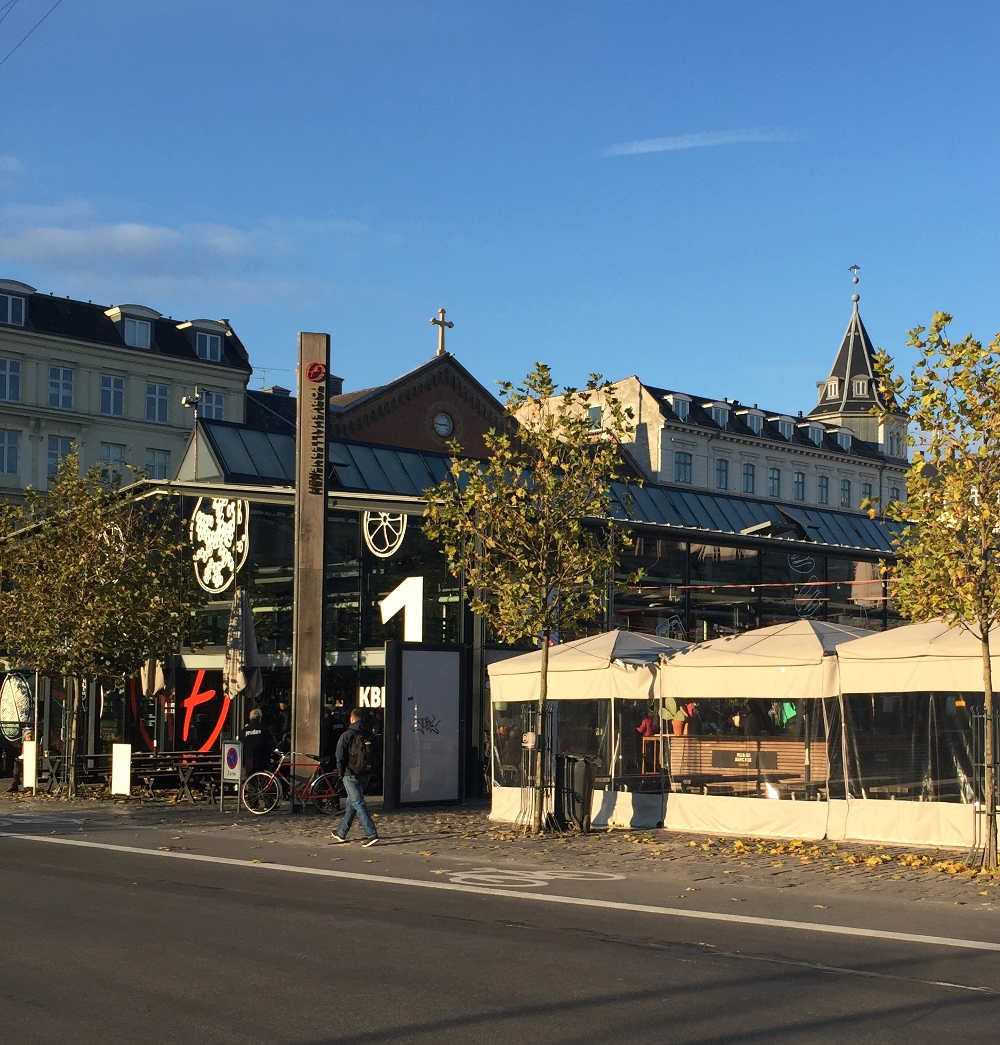
Visiting food markets like Papirøen, Aarhus Central Food Market, and Torvehallerne (right) made us realise that many of our cities are missing out big time. We were lucky to get a ‘behind the scenes’ tour of Torvehallerne market, Copenhagen’s most famous food market with one of the organisers in charge of the market development. It was remarkable to see how organised the structure is with assigned secure storage space right under the market area.
The market organisers look after all outlays such as waste, electricity, water, administration, maintenance, and staff changing areas, allowing the vendor to focus on their core business. It was fascinating to hear that a property developer who owns 10% of all buildings in Copenhagen operates the market. The property developer put a lot of research and thinking into the model, working with the local municipalities. Their vision in creating this market was not to make a quick buck in eight to ten years but to look at the long-term benefits a market could have for the surrounding area. It generates activity, and therefore adds market value to the adjacent buildings. What a future thinking idea. I wonder could we doing something similar in our own capital in the Fruit Corporation Market perhaps and in other cities around Ireland?
Throughout the Denmark adventure, we sampled many different types of drinks from natural wines to coffee and craft beers. Confidence just oozed from these experiences. Something many of us instantly noticed was how craft beer was at the forefront of bars, pubs and restaurants. Very little merchandise from big brands was visible giving all beers an equal opportunity to speak for themselves. Visiting places like Mikkeller in Aarhus, and BRUS and Spontan in Copenhagen showed us what brewers can achieve if our licensing laws could be relaxed a little.
Tourists should be able to buy beers from local craft breweries while touring, but at the moment, they are not allowed. I will remember the dinner we had in Spontan as it offered a whole new way of drinking and dining for me – something I have never experienced before. We sit in a brewery, turned bar, turned restaurant, turned off-license and had meal with a choice of matching beers or wines – if you were cheeky; you got to taste the lot!
It was great to visit Bar Vin, one the most famous wine bars in Copenhagen, owned by Rosforth & Rosforth who are the main suppliers of wines to restaurants like Noma and Relae. What I loved about this place is the genuine chemistry between the front and back of house. While receiving a masterclass in some natural wines on offer the Chef appeared from the kitchen with a small charcuterie affair. Both worked together to deliver a cohesive story to us.
In visiting GreatCoffee, we didn’t just get a coffee presentation from Søren Stiller Madsen, but we received a masterclass in conviction! Søren showed us how to be a master of a craft and demand attention from a room.
For lunches and dinners, we dined in many different concepts from Noma’s little brother, Restaurant 108 and Baest in Copenhegan to Saart and Hærværk in Aarhus. All were different with some telling their story better than others. Confidence and connectivity again was there between the front of house and kitchen. Chefs came out on the floor explaining the cooking techniques involved in our menu.
Notably, all restaurants had their food on display in some way. Many with chilled glass cabinets out front full of meat, game and poultry and some had beautiful manicured open kitchens. Although, I was little shocked to see that their producers were not at the forefront of their message. No mention of any producers on menus and they were rarely mentioned when the chefs and servers were delivering their story.
While visiting Dokk1, a public library that won the 2016 award as the best new public library in the world, we were delivered a remarkable presentation on Denmark’s plans for the European Capital of Culture and European Region of Gastronomy for 2017.
Additionally, we heard about the region’s newest food-project called Engagefood. Actually, sitting on my desk is a 486-page official programme titled ‘Aarhus 2017 – European Capital of Culture ‘LET’S RETHINK’’. Food plays a pivotal role in their year of culture.
Galway will be the European Region of Gastronomy in 2018 and European Capital of Culture in 2020. Wondering how’s the planning coming along with Galway City Council and Galway County Council?
Another stimulating project we got to see in action was the Copenhagen House of Food . Their mission is to improve the quality of public meals offered by Denmark to its citizens and to create a healthy, happy and sustainable public food culture. They have a number of projects ongoing that are achieving this inspiring mission. Notably the Organic Conversion Project where Denmark want all public consumption to be 90% organic.In a 2015 report, it was at 74.5%.
Although, I must state that they have to import some organic food from other countries, as they cannot meet the demand. But their public procurement authorities are working closely with food service providers and producers to improve local supply. Many justifiable reasons are listed on their website for this mission. Not just to create a more sustainable approach to public consumption but also to strengthen skills and professionalism in public kitchens, and create more interesting job possibilities.
They recognise that “all children deserve good, nutritional food of high culinary quality. Food has to provide enjoyment and satisfaction for the children, the parents and the employees in the public institutions.” If you are interested in their future thinking model, have a look at this presentation
As you can see, we learnt a lot from this trip. We all said it would be very interesting to do this trip again but next time with the unconverted! That is - our councils, our ministers, our tourism and food agencies and policy makers who need to see collectively how working in harmony with entrepreneurs and restaurateurs can create a food brand which can play in the international field and in turn can equate to an economically viable destination for gastronomy.
One central thinking is required if we want our little green island to get the international recognition we deserve. At the moment, we just have too many messages, brands and programmes in circulation. It’s confusing for me, let alone our citizens and overseas visitors.
I asked Food Champions to give me their thoughts and learnings from the excursion. Gabriel Faherty, of Aran Islands Goat’s Cheese mentioned he loved the connection in Baest between the farm and the restaurant, and says “there is definitely an opportunity for farmers and chefs in Ireland going into partnerships to provide top quality produce from farm to plate”. Chris Molloy of the Lemon Tree Restaurant in Donegal declares “what I've learned is that we are not too far behind anywhere in term of the quality of food.
If we took twenty-two Danish Food Champions to Ireland we could blow them away with what we can offer”. He also noted that Denmark does “tell a good story and this is something we could get better at. We need to be more confident in what we have. For myself, I couldn’t feel more proud of what we have and are offering up here in Donegal than before I went on the trip.”
I’m looking forward to seeing what comes out of this thought-provoking adventure. We won’t see it tomorrow, or next month. Give it six-months or so to see some movements and developments. Although, I have already witnessed some exciting new collaborations. Watch this space.
Again, until my next update, please join the #FoodChamps and keep shouting about our rich soils, clear seas, and even more importantly our skilled farmers, growers, fishermen and women, butchers, producers, chefs, servers and all those people involved in the food movement around Ireland. We can and we will put our little green land on the world map for food and tourism.
WHAT IS THE FÁILTE IRELAND FOOD CHAMPION PROGRAMME ABOUT?
In the aim of championing Irish food, influencing Irish cuisine, and developing our food tourism offering, Fáilte Ireland designed the Food Champion initiative back in 2012-13 as part of the Food Tourism Network Development programme. To qualify as a candidate for this voluntary role, the nominee must have demonstrated commitment to implement change in their local communities, worked in the industry for a minimum of two years, be open to developing new ways to further embed the link between Irish food, stories and its value to the visitor experience, and encourage visitors to stop, spend and stay longer in their destination.
On appointment of our new roles back in June 2016, twenty-two of us committed to work with Fáilte Ireland for the next three-years in spreading the good word about Ireland’s food experiences. A collective full of bakers, brewers, chefs, cookery tutors, event organisers, farmers, food activists, hoteliers, innovators, lecturers, marketers, producers, publicans, restaurant and café owners, writers, and food tourism professionals – where many of us carry a variety of these hats within the industry. As it states on the Fáilte Ireland website, each Food Champion “has intimate knowledge of their own area. They are an essential local connection to what is happening on the ground; they are mediators, they are disseminators, they are all communicators”.
As Food Champions, we are here to help Fáilte Ireland plan, deliver and promote the best food experiences in our regions. We work with other Food Champions and Ambassadors, are pro-active and inclusive, share ideas within our communities and develop local tourism initiatives through events, pop-ups and attaining national awards. All this must be delivered through the ethos of Ireland’s three tourism brand experiences; Wild Atlantic Way , Dublin - A Breath of Fresh Air , and Ireland’s Ancient East .
Collectively, we believe that Ireland can be recognised by visitors for memorable food experiences, which evoke a unique sense of place, culture and hospitality.
If you have a food tourism idea or need help in developing and promoting one, we are all here to help. For more information about the Food Champions, please click here. [ http://www.failteireland.ie/Supports/Food-Tourism-in-Ireland/Food-Champions.aspx ]
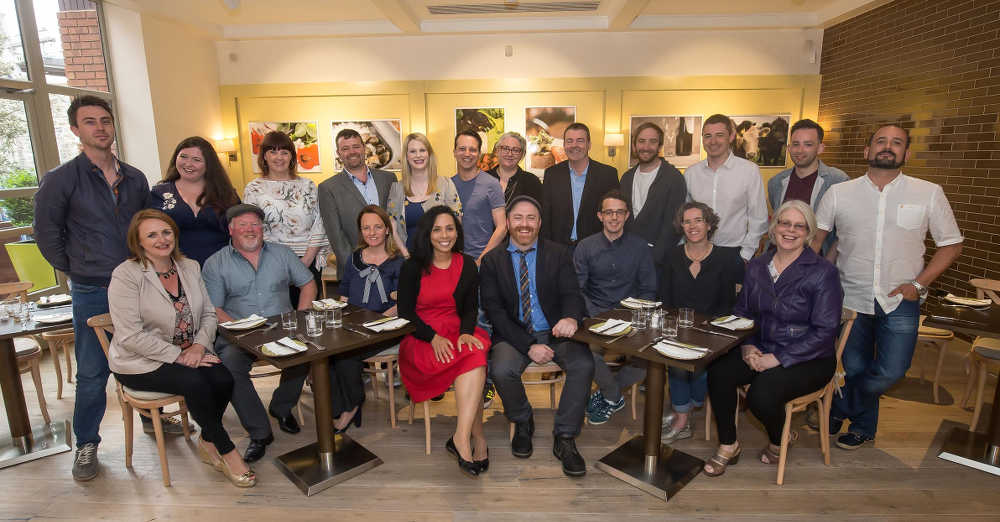
THE NEW FOOD CHAMPIONS IN ANTHONY’S GROUP ARE:
Photo caption: Fáilte Ireland’s new food champions (front row, l to r) Jacinta Dalton, Gabriel Faherty, Olivia Duff, Ketty Elisabeth, Garrett Fitzgerald, Chris Molloy, Ruth Healy and Brid Torrades. (Back row, l to r) Kevin Ahern, Seáneen Sullivan, Claire Dalton, Tom Flavin, Judith Boyle, Ivan Varian, Aine Maguire, Pádraic Óg Gallagher, Patrick Ryan, John Relihan, Anthony O’Toole and Niall Sabongi. Photograph: Pat Moore
Ireland’s Ancient East
Anthony O’Toole – Chef, culinary creative and writer, Wexford
Claire Dalton - Dungarvan Brewing Company, Waterford
Gearóid Lynch - The Olde Post Inn, Cavan
Judith Boyle - Beer sommelier and publican, Kildare
Patrick Ryan - Firehouse Bakery, Wicklow
John Relihan - Holy Smoke, Cork
Kevin Ahern – Sage, Cork
Olivia Duff – The Headfort Arms Hotel, Meath
Dublin – A Breath of Fresh Air
Garrett Fitzgerald - Brother Hubbard
Ivan Varian - Dalkey Food Company
Niall Sabongi - Klaw
Ketty Elizabeth - French Foodie in Dublin and Delicious Dublin Tours
Seáneen Sullivan – L. Mulligan Grocer
Pádraic Óg Gallagher - The Boxty House
Wild Atlantic Way
Áine Maguire - The Idle Wall, Mayo
Gabriel Faherty - Aran Islands Goat’s Cheese, Galway
Chris Molloy - The Lemon Tree, Donegal
Tom Flavin - The Strand Hotel, Limerick
Mark Murphy - Dingle Cookery School, Kerry
Jacinta Dalton - Department of Culinary Arts, GMIT, Galway
Ruth Healy - Urru Culinary Store, Cork
Bríd Torrades - Osta Cafe, Sligo
For more information about the Food Champions, please click here.
----
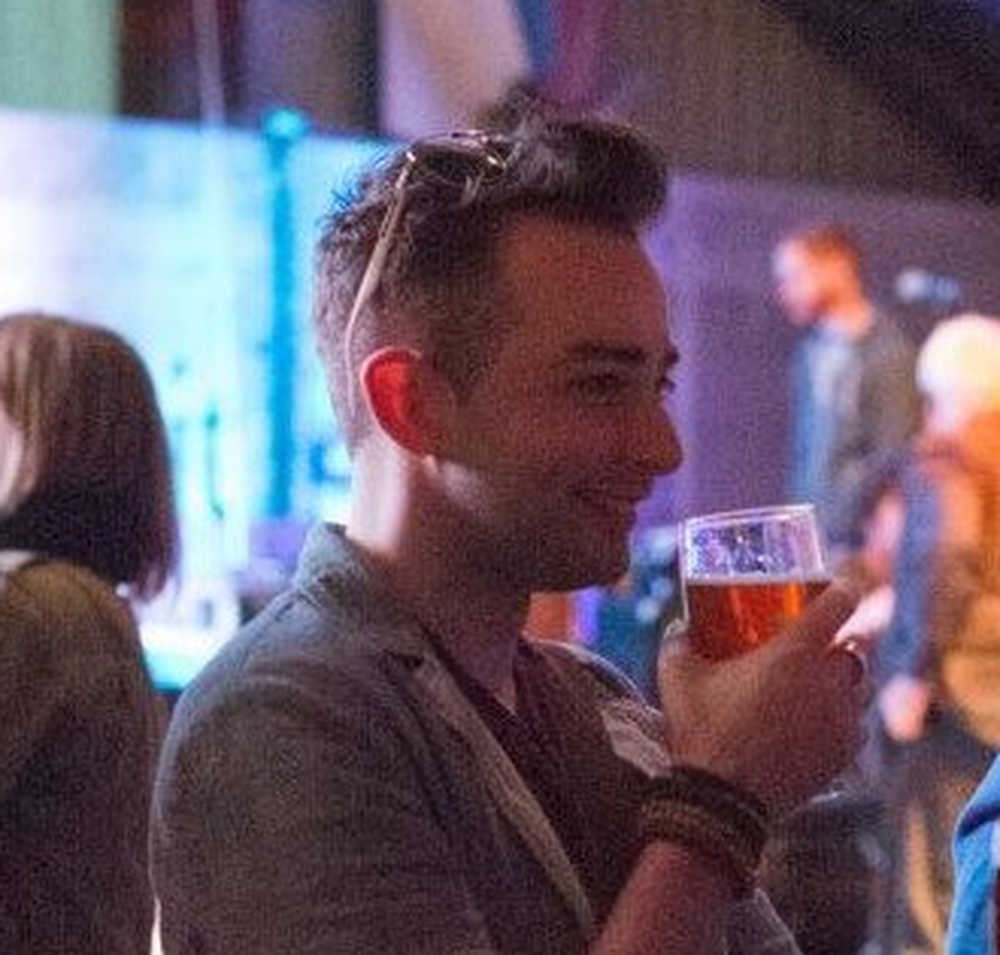
Anthony O’Toole is a freelance chef, consultant and fervernt food advocate. From a young age he was to be found helping his mother and grandmother in the kitchen; his mother was a great baker and made occasion cakes. His granny, to whom he was ‘like an adopted son’, grew tired of his experimentation in the kitchen and pushed him towards a kitchen job. He embarked on his cookery career at 13, learning quickly to take on the responsibilities of running a kitchen. Anthony went on to study a degree in Culinary Arts and then a Masters in Culinary Innovation and New Product Development in 2012 at Dublin Institute of Technology (DIT). He has also completed an Advanced WSET (Wine & Spirit Education Trust) certificate in Wine and Spirits. After his degree, Anthony spent four and a half years as Food Business Developer with catering company KSG. Since then Anthony has worked as freelance chef and consultant, as well as a cookery tutor, caterer and event organiser. ‘Education’ and ‘collaboration’ are the tool by which Anthony believes we can grow our food culture to the next level and attract the international recognition our little green island deserves, and these are two things that he is deeply committed to, along with working to link everyone and everything to create a strong local food community. @CulinarianPress





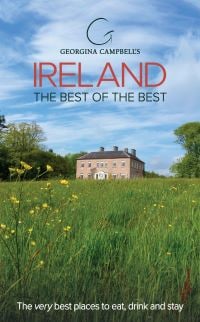
There are currently no comments
Leave a comment
Not a member? Register for your free membership now!
Or leave a comment by logging in with: